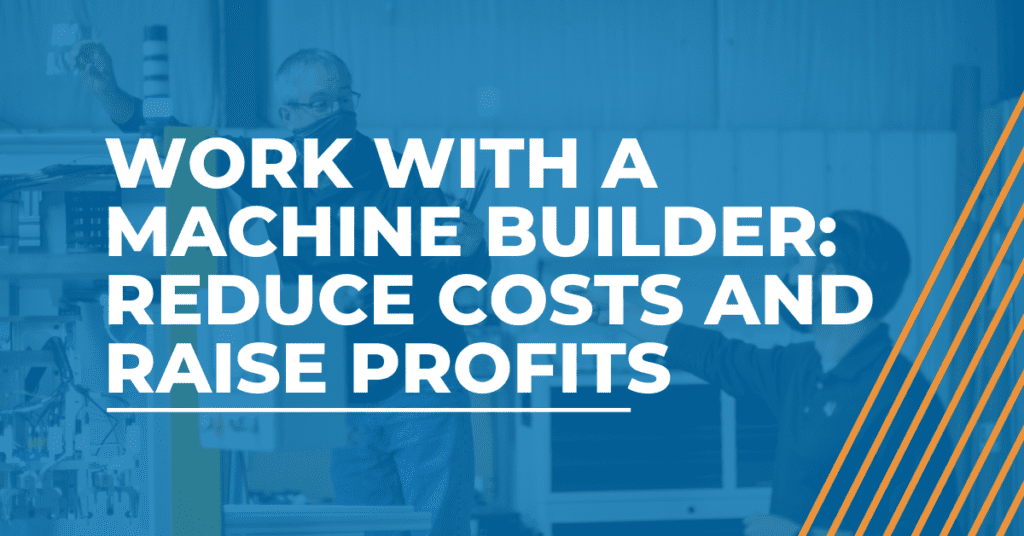
Work With a Machine Builder: Reduce Costs and Raise Profits
With the recent increases in demand for faster cycle times, higher quality parts and lower overhead costs; manufacturing firms across the globe are considering best practices for moving into the space of automation, including working with a machine builder. A key decision during this process is deciding between internal and external routes of automating their processes and why each would be beneficial for them.
There are a few different routes to consider. Hiring an internal automation group to take on the challenges, outsourcing to a machine builder and integrator, or acquiring a firm to take on the entire process and integrate it into the company. Each direction poses its own challenges. Here are factors to consider:
Widespread Industry labor Shortage
Deloitte Insights recently published data that indicates “manufacturers are finding it 36 percent more difficult to find talent today than in 2018, even though the unemployment rate is much higher than in the recent past.” Widespread industry shortages have left the manufacturing world with a difficult choice: adapt or fall behind.
Company executives and plant engineers should be considering the right processes to automate. The size of the company and typical workloads will ultimately determine how they can set a path to success for implementing automation. While each option has unique advantages and disadvantages, nonetheless when needing to get the best return for investment, it is clear that automation is the best process moving forward.
Automating Processes Internally
The automation industry used to be strictly focused on the desire to reduce labor challenges. The once high cost barriers are now leveling, making it easier than ever to automate. A manufacturing company can greatly increase output with the combination of automation systems and connected software.
Manufacturers must distinguish between the best and worst routes to automation for their processes. Some companies might feel well-equipped to take on the challenge internally by addressing their pain points and deciding on their overall goals. They must ask themselves why they want to automate, what challenges they want to overcome and where they want to improve.
Some companies might have the capital and staffing to take on automation challenges internally. However, If those pain points are processes that require new solutions or robotic intervention, most firms might be better off hiring a machine builder or automation integrator as capacity and expertise in certain applications justify such outsourcing.
Advantages of Hiring a Machine Builder
Automation of a factory is not a process that should involve guesswork. Automation companies can come in with in-depth knowledge of similar pain points and solutions and provide services and knowhow you might not have internally. Additionally, a machine builder can add support before and after the process completion to ensure you’re getting the best return on your investment.
When investing in automation, getting the best run out of your production while maintaining your budget thresholds requires expert application knowledge. A team of engineers experienced in the technologies and processes of these programs can find solutions with minimal costs.
With a team of qualified engineers in place and a system solution worked out, manufacturing companies can greatly increase their cycle times and production rates through the help of a machine builder. With the reduction in labor costs and increase in production, an automated manufacturer is better equipped to achieve its goals.
Other Considerations
If a manufacturer has capital and a solid plan for growth, another consideration would be to acquire or merge with a firm already established and integrate them into your company to provide the best solutions for your projects now and in the future. These acquisitions have been successful for companies such as Apple and Tesla and can be a key to a manufacturer’s growth. By having the teams work concurrently, automation can be spread across all parts of the company, not just the manufacturing floor. With technology integration and data leading the way, a manufacturer would be in a great position to head into the new Industry 4.0 era.
Tap Into the Benefits of Automation
If you are ready for your next automation project and not sure where to start, download this [CHECKLIST] to “grade” your integrators or book a virtual meeting with us to assess your automation needs.
